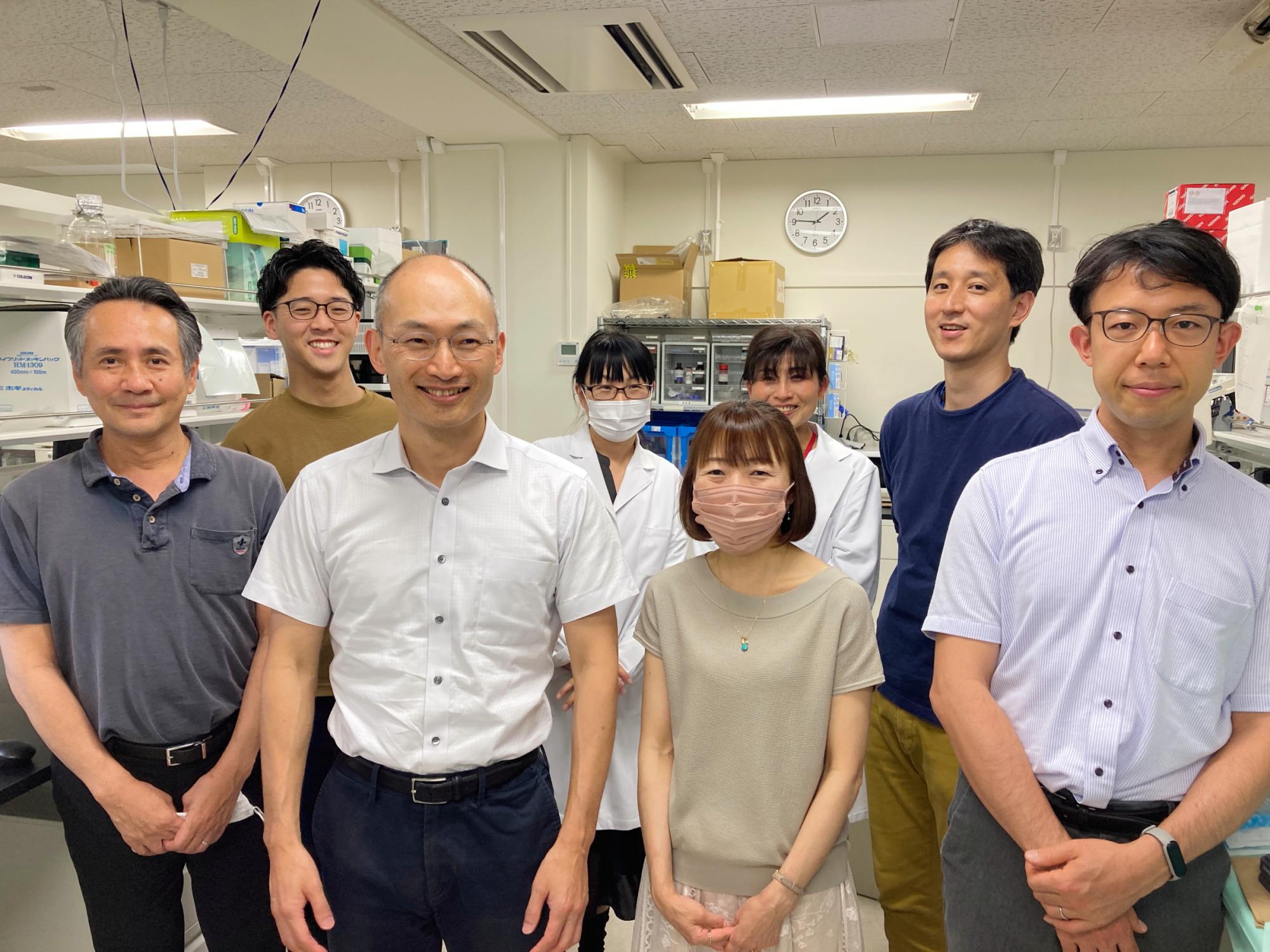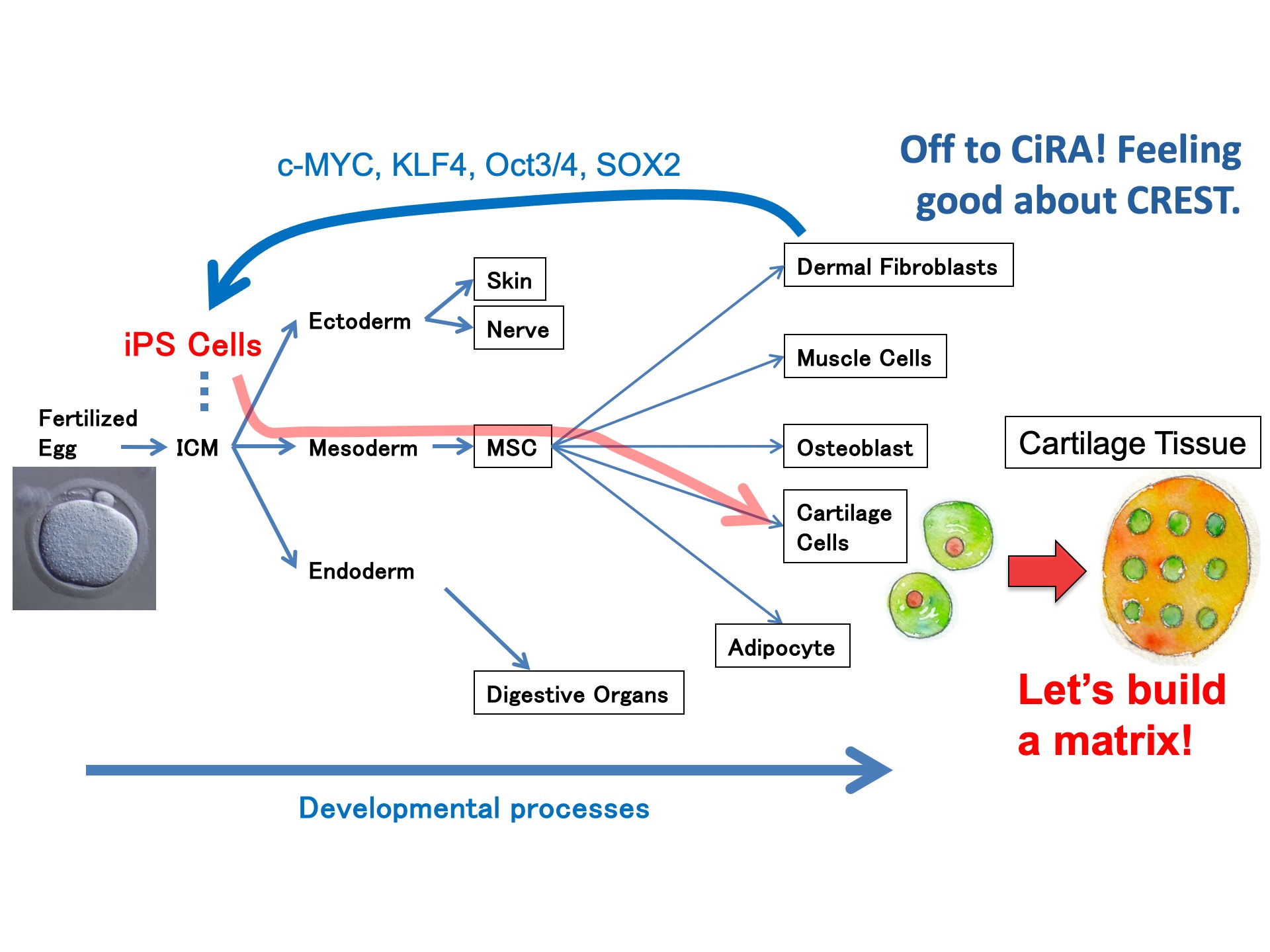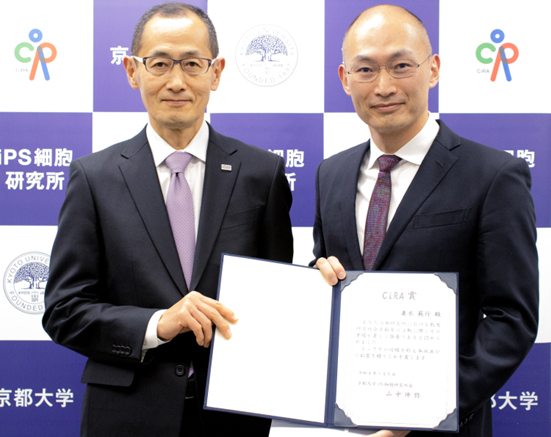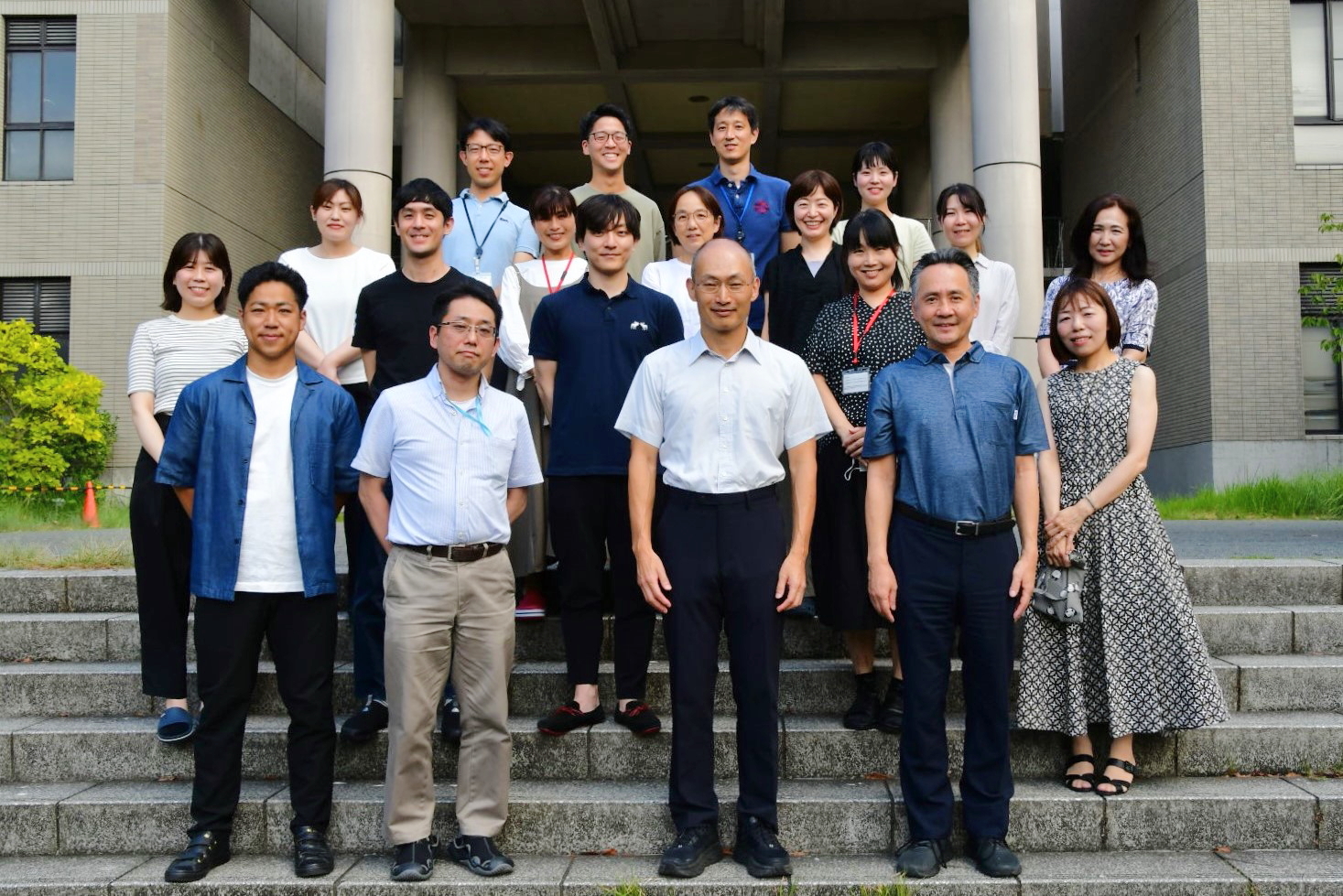Professor Noriyuki Tsumaki's 'The Diverging Path, The Continuing Path' Part 2
Basic research and clinical applications are now converging
2023.10.27

In this installment, we will be discussing the developments that have occurred since the creation of iPS cells. You can catch up on our previous discussion by following the link below.
Embracing the challenge: my journey into iPSC research
Never Giving Up on Cartilage: In the Research Lab
In 2006, Dr. Shinya Yamanaka reported on induced pluripotent stem cells (iPS cells)*. This groundbreaking research received extensive coverage in newspapers and on television. Essentially, it meant that ordinary cells could be rejuvenated, similar to embryonic stem cells. Skin cells could be reprogrammed to a state resembling embryonic cells, from which various cell types could be generated. This was awe-inspiring even to laypeople.
On the other hand, I had long been interested in treating or creating cartilage. When I began thinking about this, I realized, "If we can transform skin cells into embryonic stem cells, there should be a way to convert skin cells into cartilage cells as well." So, when I became an independent associate professor in 2007, I embarked on my research to directly reprogram skin cells into cartilage cells. This research became the cornerstone of my application for CREST research funding, and after about four years of dedicated work, I published a significant paper.
Thanks to this achievement and my expertise in applying iPS cell technology, I was appointed as a professor at Kyoto University's CiRA (Center for iPS Cell Research and Application), which had been established not too long ago.

I continued to balance clinical work and research in orthopedic surgery until I was over 40 years old. I joined CiRA in 2011, and this transition marked a significant turning point. I faced a dilemma about whether to focus solely on research and if I could make a successful transition.
However, I decided to take on the challenge because my previous work in basic research on cartilage development had led me to the idea of creating cartilage from iPS cells and exploring their regenerative potential. Initially, it was just me, a professor, two staff members (a lecturer and a research fellow), one technician, and graduate students. With the promise of more research funding for clinical applications, we were able to expand our team by adding more researchers and technicians, which, in turn, allowed us to admit more graduate students. At present, there are about 20 graduate students in our lab.
From the beginning, our lab's motto has been "Never Give Up on Cartilage."** This motto signifies our determination not to give up on conditions that were previously considered untreatable in orthopedics, especially those related to cartilage. I felt a great sense of excitement during that time, and I believe our graduate students shared that excitement with me.
After joining CiRA, I continued to work on both improving the efficiency of converting skin cells into cartilage and converting iPS cells into cartilage. This process was full of trial and error. Even during my time as an independent associate professor at Osaka University, the members of my lab experimented with various combinations of factors for introducing genes into skin cells. When it comes to making retroviruses for gene delivery, we transfected constructs into 293T-derived Plat-E cells to generate the viruses.*** Making high-efficiency viruses involves strict adherence to protocols (sometimes working on weekends), as it's crucial to cultivate the cells properly to achieve the desired results. My lab members ensured that this was done meticulously.
CiRA provides an exceptional research environment, not only in Japan but also on a global scale. We had access to shared laboratory equipment, animal research facilities, and outstanding support from administrative staff, public relations, and intellectual property management. The fact that Professor Yamanaka was in the same building was somewhat intimidating and always present in the back of my mind.
Fortunately, we were able to secure a substantial research grant from AMED (Japan Agency for Medical Research and Development) with a focus on clinical applications for cartilage regeneration. We quickly assembled a team, and within this environment, we had the opportunity to engage in clinical development. The experiences gained in the midst of unexpected challenges and unforeseen events were invaluable. Surprisingly, my lab members remained calm and were a great source of support throughout the process.

I was part of CiRA for a decade. During this time, we developed a method to create cartilage from induced pluripotent stem cells (iPS cells) and successfully applied this approach in clinical settings, regenerating knee joint cartilage in patients with cartilage injuries. Our achievements were recognized, and we received the CiRA Award for this work.
- *By expressing four transcription factors (Oct3/4, Sox2, Klf4, c-Myc) in dermal fibroblasts, these fibroblasts undergo reprogramming, completely erasing their original properties, and transforming into pluripotent stem cells.
- **When I was presiding over the 2017 Japanese Society for Cartilage Metabolism, I had to come up with a theme. I chose "Never Give Up on Cartilage," which was well-received by members of my research team.
- ***This involves introducing an expression vector containing the target gene into Plat-E cells, creating efficient viruses that can infect dermal cells or iPS cells.
From fundamental research to clinical application
One significant aspect of clinical application was the development of induced pluripotent stem cells (iPS cells). Until then, I had never researched iPS cells. However, I was studying the process of cartilage formation in embryonic development. I thought that with this knowledge, I could probably generate cartilage from iPS cells. The differentiation stage of iPS cells is similar to the stage in the inner cell mass of the blastocyst.
Creating cartilage from iPS cells and subsequently transplanting it to a damaged area for therapeutic purposes was a significant breakthrough. This concept led me to consider clinical applications. I had been conducting research in a direction that didn't seem clinically applicable since 1992. iPS cells were reported in 2006, and I shifted towards clinical applications. It's like the main trunk of basic research branched into the field of clinical applications. I consider it as branching off and continuing down a path. From an external perspective, the branch might appear thicker (in fact, it's easier to secure research funding for clinical applications), but I have been dedicated to basic research all along, and I hope that students will also pay attention to that aspect.
Around the early 1990s, when I began my research, basic research and clinical applications seemed quite distant from each other. However, both areas have seen significant advancements, and now they are much closer. In the field of drug discovery, the concept of molecular targeted therapy has gained prominence. It is based on the idea that understanding the disease pathology at the molecular level allows for the development of more effective drugs by targeting specific molecules. Therefore, it has become apparent that the outcomes of basic research can directly and rapidly benefit clinical applications, a scenario that is far more prevalent now compared to the past.
Persisting in science: an endless journey
Beyond practical applications
You'll be left behind at the cutting edge without continuous pursuit of science. The moment you delve into clinical applications, scientific progress stagnates. That's why practical applications should not be hoarded indefinitely but rather, collaborations with companies should commence promptly. If a company is willing to take it on, that's even better. Meanwhile, at your own laboratory, continuing basic research to advance further is the ideal scenario. Starting from the birth of life some 4 billion years ago, and understanding the development of organisms, like mice and humans, from fertilized eggs is the ultimate goal. The key is to incorporate intermediate clinical applications along the way.
To put it into practical use, it's essential for major corporations to show interest. This year, we established a collaborative research program on cartilage regeneration with Asahi Kasei Corporation. We are working together on this. As a message to prospective graduate students in our research lab, I would like to highlight that we cover everything from basic research to clinical applications and even societal implementation. Therefore, you can gain various experiences.
Collaborating remotely in research
By the way, I hardly do actual experiments now, but during the COVID-19 pandemic, I used the time I had to study programming in Linux, R, and Python. My goal was to start learning how to analyze dry data like single-cell RNA-seq*, and I'm working hard to become proficient in it. I need to be able to have conversations with professors I collaborate with on dry data analysis. When we first introduced it to our lab, we were guided through the process, and we were able to publish a paper on intervertebral disc regeneration last year.** We used the same analysis for a paper on joint regeneration through allogeneic transplantation as well.*** By that time, our lab was capable of doing it all on our own.
Our collaborators were professors from the Tokyo University of Science and RIKEN. However, we haven't actually met in person. We've only interacted through emails and web conferences. This collaboration began due to the COVID-19 pandemic. Since we haven't met in person, sometimes we'd jokingly wonder if the other person really exists. Trust and credibility are crucial in these remote collaborations, and I believe that they can be established through sincere and responsive interactions.
- *Single-Cell Transcriptome Analysis: A technique that comprehensively examines gene expression in individual cells.
- **"Human iPS cell-derived cartilaginous tissue spatially and functionally replaces nucleus pulposus"
- ***"Engraftment of allogeneic iPS cell-derived cartilage organoid in a primate model of articular cartilage defect"
Giving back to my alma mater
'It's calm here'
When I was at Kyoto University, I thought I would stay there, but CiRA is a research institute, so there isn't much student education, and the research competition is fierce. I intended to work hard there, but when I received an offer for the professorship in biochemistry at Osaka University, I felt like going back. In the professor selection at Osaka University, I mentioned contributing and giving back. In the end, it feels good to be able to return to my alma mater.
Most of the research members from my time at Kyoto University's CiRA joined me when I moved to Osaka University. So, the research team members at Osaka University are almost the same as those from my time at Kyoto University. People in our lab are calm, and I've heard from those who came from different labs or third parties that they say, 'It's calm here.' Well, I hope I'm calm too. In that sense, I feel like we're not overly aggressive. Maybe better data would have come out if we were more aggressive. I don't know.
But during work hours, everyone focuses on their work and maintains a professional attitude. The technical staff has fixed working hours and they leave promptly when their work is finished. I think they work with that mindset. Graduate students, research fellows, and lecturers, I believe, operate under a discretionary labor system. However, even those on a discretionary labor system follow core hours (9 am to 5 pm) meticulously, and they leave promptly at 5 pm. It's relatively the same in our lab. Since we're involved in clinical applications and sometimes need to work on weekends for tasks like cell cultures, we arrange shifts for the technical staff on weekends. They take weekdays off when they work on weekends, provided they have no other commitments. We're careful about this.

For each researcher, it's their individual career, so I believe it's important for each of them to succeed in their own way. But to achieve that, you need to write papers and accumulate achievements. This isn't something you can do alone, so I rely on the members of the lab to cooperate. They write the first author paper, but a collaborative environment and good interpersonal relationships are essential. In that environment, I hope everyone can contribute their strengths comfortably. Whether it's the students, research fellows or lecturers, everyone is aiming for career development and promotion in their own way. On the other hand, for the technical staff, career development in the sense of acquiring technical skills is crucial. They are not necessarily aiming for papers. I think it's important to have both types of individuals in the lab and to run the lab with a mutual respect for one another.
There are plenty of options even after enrollment
When it comes to students' career paths after graduation, it's about what they want to become in the future. Do they want to advance their careers through research, or do they want to work in jobs related to clinical applications? I believe there are positions available in the field of clinical applications. Perhaps at the beginning, they might not know anything (and may not even know which direction they want to go), but it's about discovering the direction they want to pursue as they learn more. It's important to choose the path that suits them best. In that sense, we have both basic research and clinical applications, so there are plenty of options even after enrollment, which is our selling point.
As for the projects, we have three main areas: basic research on cartilage, joint regeneration, and drug development for growth cartilage. Students can choose to work on any of these areas, and some are even involved in two or all three of them. I emphasize that basic research is essential because it forms the foundation for our clinical applications. It's about determining what to do on top of that foundation.
As an orthopedic surgeon, there are two paths to follow: clinical practice and scientific research. Both of these paths coexist, and their synergy creates a positive cycle. If you're particularly interested in clinical applications (or even if you're interested in basic research), please consider visiting the lab. You can find more information on our website for reference.
